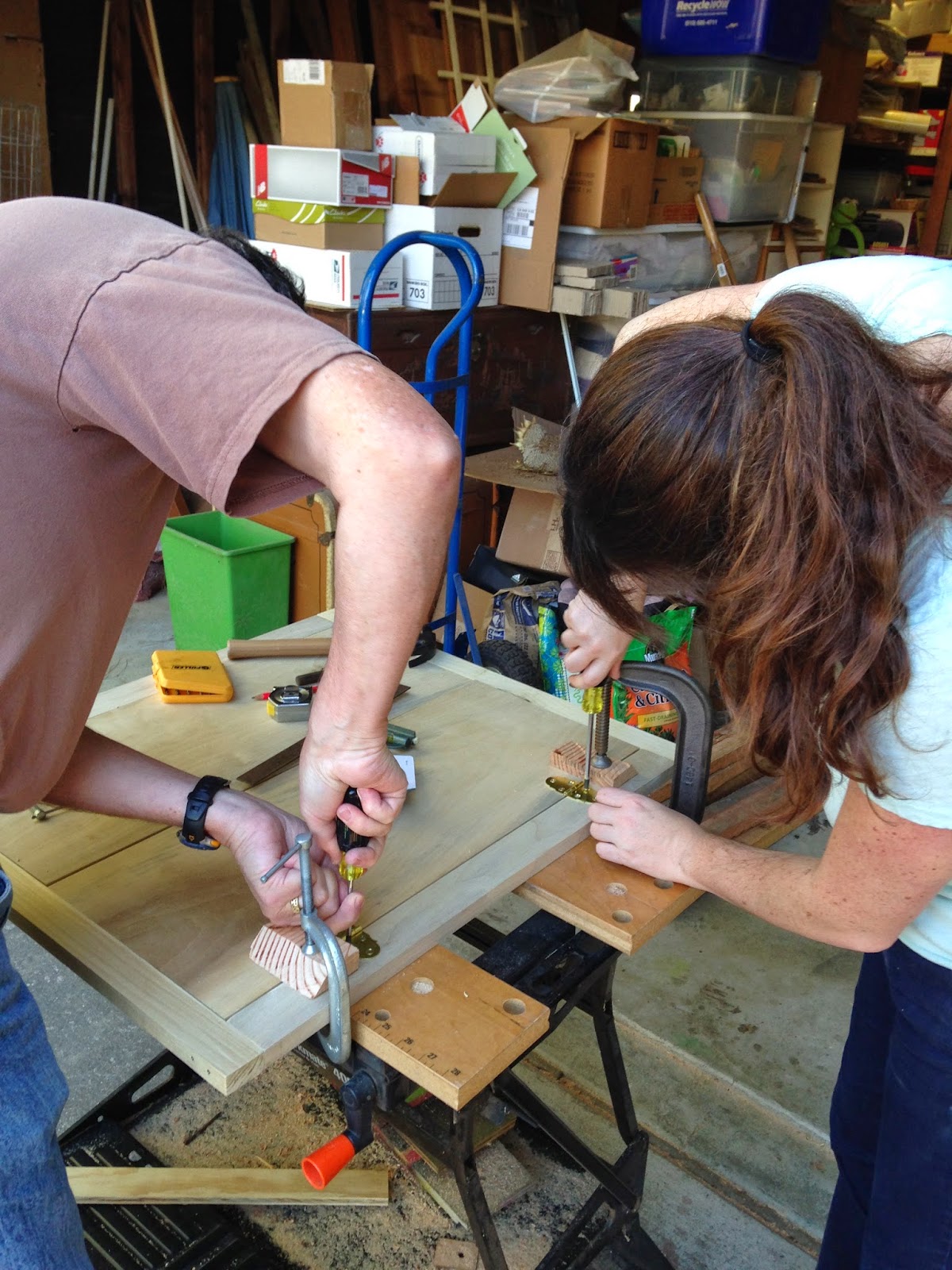Let's talk about doors.
Here's the thing about doors: if you want them, you're going to have to hang them. Gravity is not going to help you.
Originally, the gun cabinet had drawers on the bottom. They were big, and deep, and mostly impractical for storing fragile objects, and would have ended up a mess every time I went looking for the fancy salt and pepper shakers. When Dad and I broke out the graph paper, the drawers were the first to go.
We cut new cabinet doors out of poplar, and I have to tell you: two rectangular pieces of wood can look the same, and have the same measurements, and they can be as twinsy as you think they're going to get, down to the thirty-second of a single inch, and you can line them up and find that they are TOTALLY DIFFERENT. We swapped them, spun them around, and flipped them over, lather, rinse, repeat. With time and the eventual use of cleverly deployed pencil marks ("left" "right" "front" "back" "top" "bottom," like a bunch of geniuses), and also some quality time with the electric sander, we found a configuration that seemed to work: two doors that matched in length and cleared the frame we'd built for them, and didn't scrape on each other when they closed. Before anything could shift, we placed the hinges and screwed them in.
It worked!
For awhile.
Here's a life lesson: the doors you have hung, which swing so freely in their frame, may be less graceful when they're bearing the stresses and pressures of a plywood rifle cabinet of undetermined age. The new doors worked when we attached them to the cabinet, but when we came back the next week, they'd warped--or, more accurately, the frame around them had shifted. We counter-stressed the rest of the cabinet with a brace and a small bucket of wood glue, but no luck. They catch and creak.
We'll have to fix them, probably using the sander to smooth out any high spots. For now, though, we're leaving them as they are--there's no use fixing them before we're done with the rest of the cabinet, when any false move might throw them out of alignment again.
But let's end with a happy story, shall we?
Back in July, as soon as the $25 for the cabinet was out of my hands, I started hunting for a vintage glass door to enclose the top half. This led me to cabinetry lesson #5,297: most glass cabinet doors are already attached to cabinets.
I spent an entire weekend in September looking, browsing the architectural salvage and furniture-resale shops of the East Bay, then trolling Etsy, then giving up and going to eBay. I had people hunting for me, stopping into garage sales and thift stores. I found a merchant in Ohio that specialized in glass doors and stained-glass windows, and gave myself a $100 budget (not including shipping!) for something we might be able to repurpose. I spent weeks waiting for their inventory to change.
One day, I was errand-hopping my way across the East Bay, racing the clock before dinner reservations with my parents. I had stopped in to
Ohmega Salvage--both sides--without luck, and was running out of time. I decided to call it quits and head to dinner.
Instead, I found myself at
Urban Ore, running to the cabinet-door aisle
just in case. I'd been there before, armed with gloves and a tape measure, and rifled through the ranks of abandoned pressboard and broken glass, and found nothing. By this time, I was getting late for dinner, and thinking I should have just headed off to meet my parents--but there I was. And there, sitting out in the middle of the aisle, was exactly one glass cabinet door with exactly the right dimensions and more or less the style I wanted. No broken panes, real wood, solid construction, not an obvious tetanus risk. Twenty-one dollars, including tax, and no need for shipping from Ohio.
I had it home before the appetizer course.
Now that it's home, the door is cooling its heels: it'll be the last big piece of the cabinet and the last thing that might throw the other doors out of whack, after we install the upper shelves. It's a good one, though. I'm glad I was late for dinner.




















.JPG)


.JPG)
.JPG)
.JPG)
.JPG)
.JPG)
.JPG)


.JPG)
.JPG)
.JPG)
.JPG)














